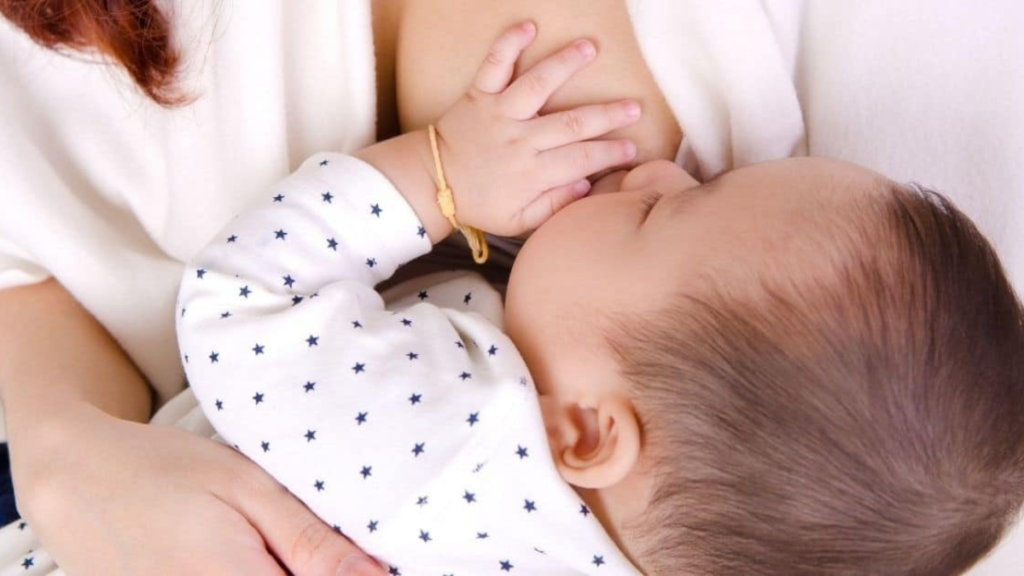
Milk bleb, milk blister, blocked nipple pore, they all refer to the same thing! They occur when a tiny piece of skin overgrows over top of a milk duct opening and milk backs up behind it. They appear as a painful white, yellow or clear dot on the nipple or areola. The pain typically is felt right at the blister or right behind it as the milk has now backed up.
Now, I don’t want you to confuse a milk bleb with a friction blister, thrush, or clogged ducts. Let’s look at those first real quick!
Friction Blister happens from damage to the nipples from improper latch or sucking or from misuse of a nipple shield or pump flange. These can appear as red or brown blisters and may be filled with blood.
Thrush is a fungal infection that occurs on your nipples and breast (most of the time baby is affected as well) and your nipples may appear bright pink with the areola red, dry or flaky. Women usually describe a burning, itching or stinging that can be mild to severe. This requires fungal treatment to resolve.
Clogged Milk Ducts are an obstruction within the milk duct itself (as opposed to a piece of skin covering the opening). The obstruction may appear as a tiny, dry clump of hardened milk (maybe even a string) on the nipple. This can be typically released with breastfeeding or manual expression. You may even be able to scrape the dried milk from the surface with a fingernail. This condition can lead to mastitis which is inflammation of the breast sometimes involving an infection. Clogged milk ducts tend to be related to oversupply or decreased milk removal.
*Just note that the above conditions can always occur along with a milk bleb as well.
Treatment
Good news is there are treatments we can do to help!
Moist Heat– this can help soften the blister. Up to 4 times per day you can do an epsom-salt soak before your nursing/pumping session. Use 1 cup of warm water with 2 tsp of dissolved epsom salts. Wipe breasts clean after soak.
After your soak, place a hot wet compress on the milk blister immediately before nursing/pumping being careful not to burn yourself.
Clear Skin: If epsom-salt soaks and warm compresses have not done the trick, you can also clear the skin using a wet washcloth. Gently rub the blister with a moist cloth. If you happen to see the plug you can try to pull it out.
Another option is to use your clean fingernail to scrape the side of the blister to help loosen the overlapping skin.
Nurse or Pump: It is very important to continue nursing or pumping as usual to help maintain your supply even though it is painful. Don’t forget your epsom-salt soak and warm compress first and nurse/pump right after.
Gentle Pressure/Massage: If the bleb still remains, try gentle pressure/massage between nursing/pumping sessions to help loosen the clogged duct. You can also use massage during your nursing or pumping session.
Pain Management
Breast Shells can be helpful to prevent friction and pressure from clothing and can also help aid in healing.
Between feedings you can use ice packs or cold compresses to help relieve the pain as well as use pain relievers like Acetaminophen and Ibuprofen.
Continue the daily epsom-salt soaks and washcloth cleanse of skin to help promote healing and prevent future blebs.
If you develop a fever, inflammation, swelling, oozing, or pus please call your healthcare provider. If you are experiencing a concurrent condition like thrush, friction blister, clogged ducts, mastitis, it’s important to help treat those as well.
If your milk blister persists, talk to your healthcare provider about lancing the blister using a sterile needle.
Do Not Try This at Home and talk to your healthcare professional about this procedure.
© 2023 All rights reserved Baby & Toddler - part of parent promotions